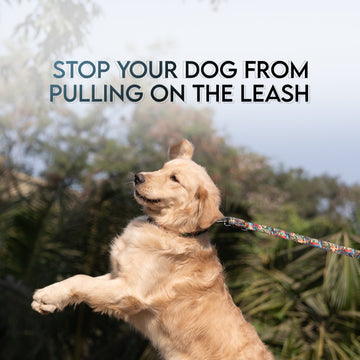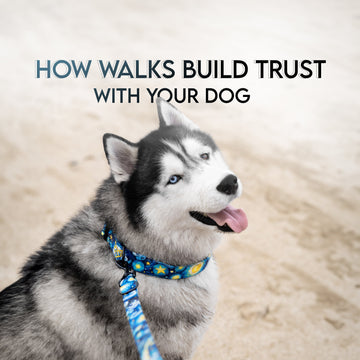Because Walks Shouldn’t Feel Like a Workout (Unless You Want Them To)
Pulling on the leash is one of the most common issues dog parents face.
It’s frustrating, sometimes embarrassing, and worst of all — it turns what should be a bonding experience into a bit of a struggle.
Many dogs pull on walks — and many dog parents feel like they’re being walked by their dog.
The good news? It’s fixable.
You don’t need harsh gear or complicated commands — just the right approach, a little patience, and some calm consistency.
🐾 Why Dogs Pull in the First Place
Understanding the why helps make the how easier.
-
Excitement overload: The world is full of smells, sounds, and things to chase.
-
Lack of boundaries: If they’ve never been taught that pulling doesn’t work, they’ll keep doing it.
-
Reinforcement loop: When they pull and still get to move forward, they learn that pulling = progress.
-
Improper gear: Some collars or leashes don’t offer enough control or feedback.
-
You’re unintentionally following: Yep, when they pull and you keep moving, you’re reinforcing the habit.
✅ Real-World Tips to Stop Pulling
1. Start Small
Don’t wait for the long walk to “work on it.” Use short, focused walks where you can give your full attention. Quiet routes work best.
2. Stop When They Pull
This is key. Stop the moment your dog pulls. Don’t yank, don’t scold — just stop. When the leash loosens, you move again. They learn: pulling = no go.
3. Reward Calm Walking
Mark the behavior you do want. If your dog walks beside you or checks in with a glance — reward it. Reinforce the good, not just correct the bad.
4. Avoid Constant Tension
Keep the leash loose when possible. A tight leash often creates resistance. Aim for slack and flow.
5. Use Directional Changes
If your dog zones out and forges ahead, try an unexpected turn or U-turn. It brings their focus back to you and breaks their autopilot mode.
6. Practice Calm Starts
The walk begins before you step out. Ask for a sit or pause at the door. Only open it when they’re calm. This sets the tone for the entire walk.
7. Tire Them Out Mentally Too
A walk isn’t just physical. Sniffing, observing, and taking in the environment is mental stimulation for dogs — and that’s equally exhausting. Let them stop and sniff often. It helps satisfy their instincts and naturally slows them down. A mentally fulfilled dog pulls far less.
8. Use Your Voice, Not Volume
Stay calm, clear, and consistent. Avoid shouting or scolding mid-walk — it only adds tension. Speak in a steady, warm tone. Your dog responds more to your energy than your volume.
🔄 What About Gear?
Training is the foundation, but the right gear supports the process.
Tools like Martingale collars offer gentle feedback without choking, and a leash that adjusts to your pace helps maintain balance without fuss. Comfort matters — for both you and your dog. If you're straining your hand, your energy won’t stay calm for long.
You don’t need gimmicks. You just need gear that works with you — not against you.
🧘 From Tug-of-War to Walk-in-the-Park
The goal isn’t perfection — it’s progress.
When your dog checks in, walks beside you, or slows down on their own? Celebrate it.
With time, trust, and calm repetition, pulling fades — and what’s left is a walk that actually feels good for both of you.




























